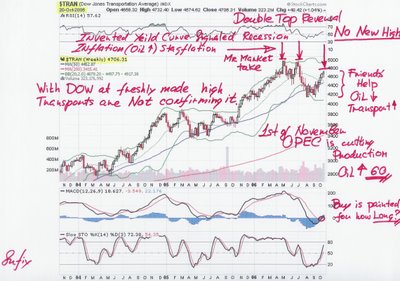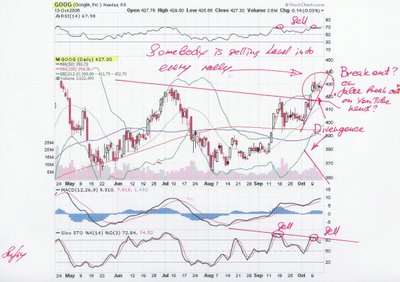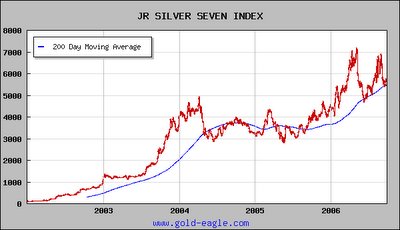Click fraud a huge problem Study finds practice widespread; many cut back online ads
Verne Kopytoff, Chronicle Staff WriterWednesday, July 5, 2006 now part of stylesheet -->
Internet advertisers paid $800 million for bogus clicks on their marketing messages last year, shaking confidence in the industry and prompting many to reduce spending with Google, Yahoo and other Web sites, according to a study to be released today.
The survey, by Outsell Inc., a market researcher in Burlingame, is one of the most detailed looks at the nagging, high-profile problem known as click fraud. Advertisers have long complained that major Internet sites don't do enough to combat the practice or, at least, disclose the extent of it.
Internet advertisers pay companies like Google and Yahoo every time someone clicks on their ads. The advertisers also share revenue with Internet companies based on how many advertising clicks their Web sites generate. Click fraud occurs when scammers repeatedly click on ads to cause a rival company to be overcharged. In another incarnation, fraudsters place the ads on their own Web sites and then click on the links to get a piece of the shared revenue they've agreed to with Google or Yahoo.
In today's report, advertisers say that 14.6 percent of all clicks are bogus. Moreover, three-quarters of advertisers said they had been victims at least once.
The perception of pervasive fraud has prompted many advertisers to change their spending. Many are asking why they should fork over money - significant amounts, in some cases -- for phantom shoppers.
The study found that 27 percent of advertisers reduced or stopped spending on click-based advertising. An additional 10 percent said they intend to curtail spending.
"In our opinion, it is not acceptable that advertisers fund the illicit profits of the scammers," Chuck Richard, vice president of Outsell, said in the report. He added that the fraud is easy to get away with and that Web sites have done little to stop it.
Gaude Paez, a spokeswoman for Yahoo in Sunnyvale, denied that her company is lax about click fraud. Rather, she said, Yahoo rigorously polices the problem with a range of automated filters so that customers aren't excessively charged.
Through the years, Yahoo has detected and declined to bill for billions of dollars in suspect clicks, Paez said. Users can always request refunds if they believe that they were erroneously billed, she added.
Outsell found that 7 percent of advertisers request a refund, netting an average of $9,507. Unsolicited refunds were paid to 4.2 percent of advertisers, with an average of $9,444 coming from Google and $4,068 from Yahoo.
Some advertisers who say they have been defrauded may be mistaken, Paez said. What looks like an unusual spike in clicks, for example, may actually be the consequence of a particular search term suddenly rising in popularity because of a news event or a holiday.
A spokesman for Mountain View's Google didn't respond to a telephone call seeking comment.
Advertisers have sued Google and Yahoo, claiming that the companies fail to filter enough of the fraud. Both recently reached settlements in separate class-action lawsuits over click fraud.
Outsell's survey was based on the responses of 407 online advertisers representing a cross-section of U.S. business. Their spending ranged from several thousand dollars online annually to more than $10 million.
That some of the advertisers cut some of their spending had a big effect on the finances of Google, Yahoo and other Web sites, according to Outsell. Combined, they missed out on $500 million in revenue in the United States, according to the report.
Still, the U.S. Internet advertising industry grew in 2005, as did Google and Yahoo. Such marketing, called pay-per-click, was a $5.5 billion business overall.
"Regardless of how impressed anyone is with the growth of pay-per-click advertising, it's dragging an anchor behind it," Outsells's Richard said in an interview. "It could be much larger."
Paez said that her company's business is still healthy. "We continue to see a lot of advertisers joining the network and increasing their spending," she said.
Ads priced by the click appear most frequently on search engines, in the margins next to results. On average, the advertisers paid $1.39 for each click on their ads during the first three months of the year, according to Fathom Online, a search engine advertising company in San Francisco.
The ads, which appear as mostly text and a link, are usually specifically tailored to the search terms. For example, a user who enters the query "beach vacation" will typically see ads from travel companies.
Richard said that major Internet companies could help improve their perception by advertisers by being more transparent. Google and Yahoo decline to make public any internal data about click fraud for competitive reasons and for fear that fraudsters could use the information to get around the defenses.
The stance has frustrated many advertisers through the years, who say they should know up front what level of fraud to expect and how many illicit clicks they get and when. Previous estimates have calculated the amount of fraud at between 10 and 30 percent of all clicks.
Richard said that dissatisfaction with click-based advertising is fueling the drive to a different type of online marketing that he insists is better for merchants. The idea, sometimes called cost per action, would require advertisers to pay only when a consumer clicks on an ad and then buys a product or asks for a brochure.
Such advertising is gaining popularity, with San Jose online marketplace eBay recently disclosing plans for an advertising network that would farm ads out to other Web sites. The site operators would be paid if visitors click on one of the ads and then buy a related item on eBay within a few days.
"Pay per click is a really rudimentary advertising -- a baby step -- and it's destined to decline and be replaced by other advertising methods," Richard said.
Click fraud
A survey about fraudulent clicks on online advertisements offers a window into a problem faced by many advertisers. Here's some of the findings:
Clicks believed by advertisers to be fraudulent: 14.6 percent
Money paid by advertisers for bogus clicks: $800 million (2005)
Advertisers who said they were victims of click fraud: 75 percent
Advertisers who said they reduced click-based advertising or plan to: 37 percent
Revenue lost by Google, Yahoo and other Web sites, as a result: $500 million
Advertisers who request refunds because of fraud: 7 percent
Average refund: $9,507
Source: Outsell Inc.
E-mail Verne Kopytoff at
vkopytoff@sfchronicle.com.
Page C - 1









































